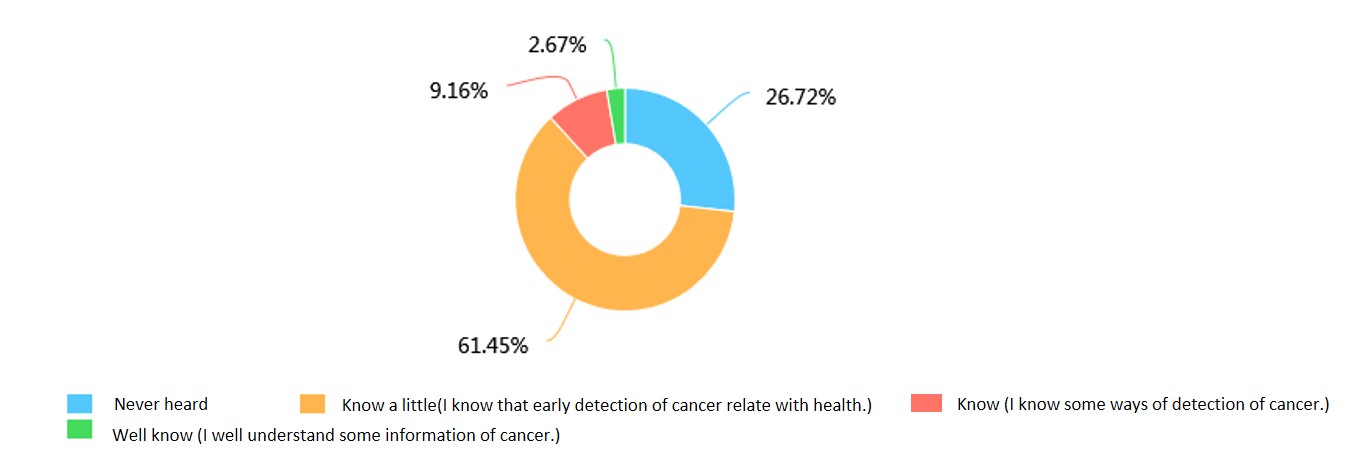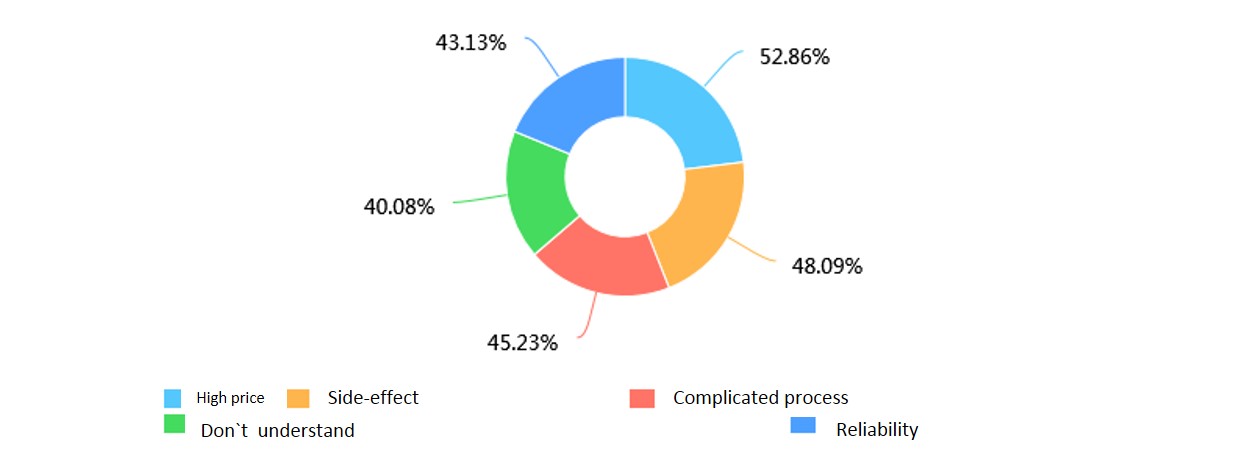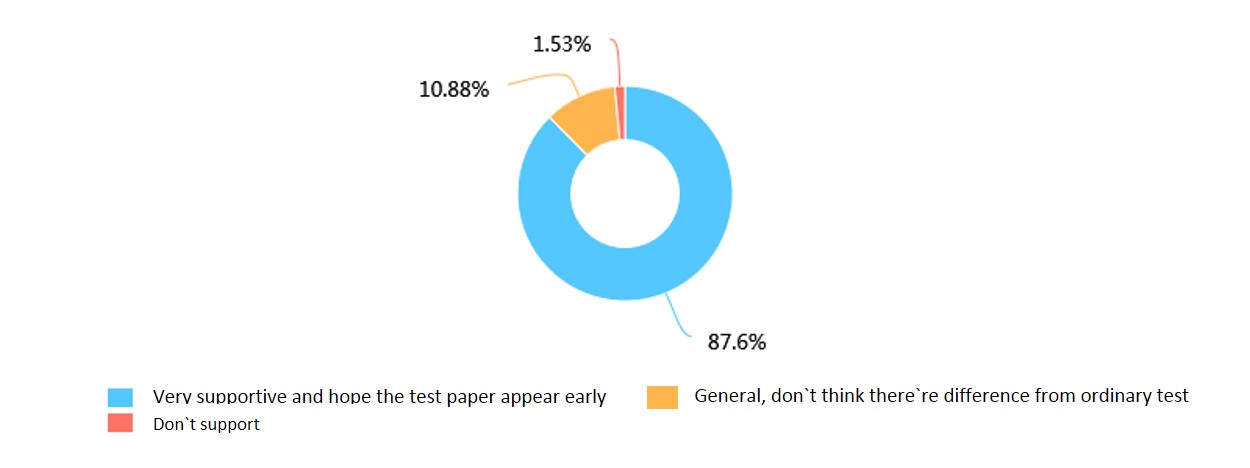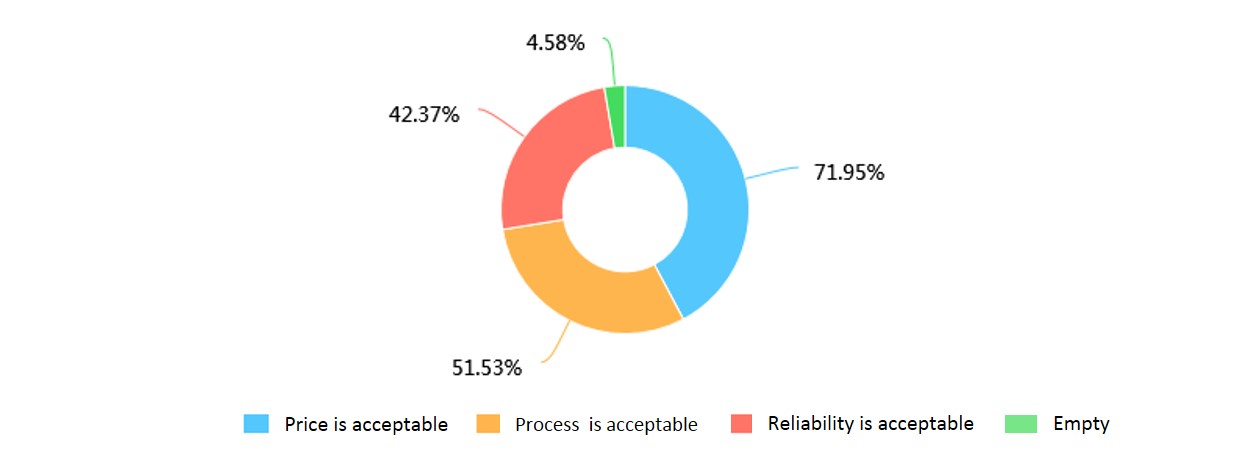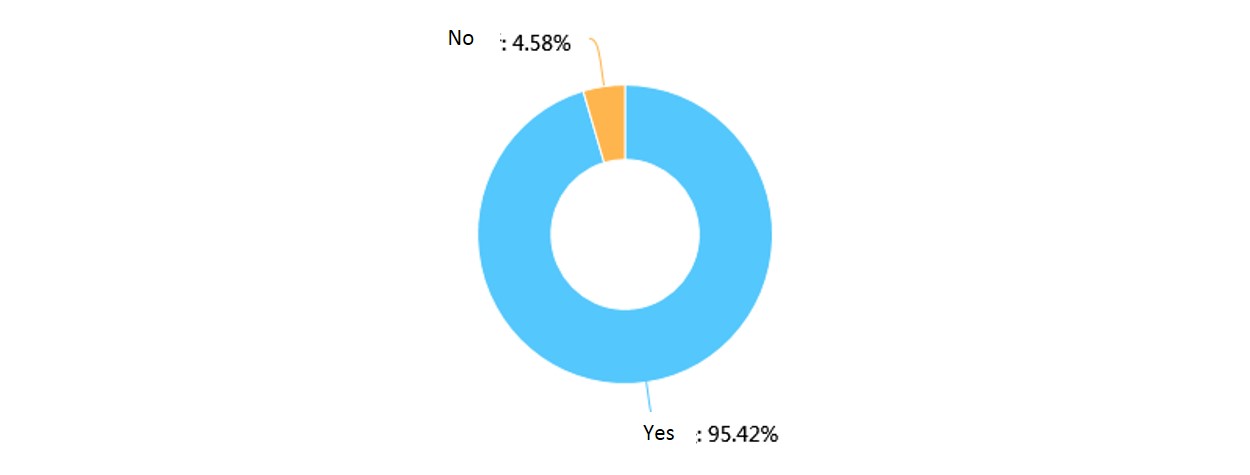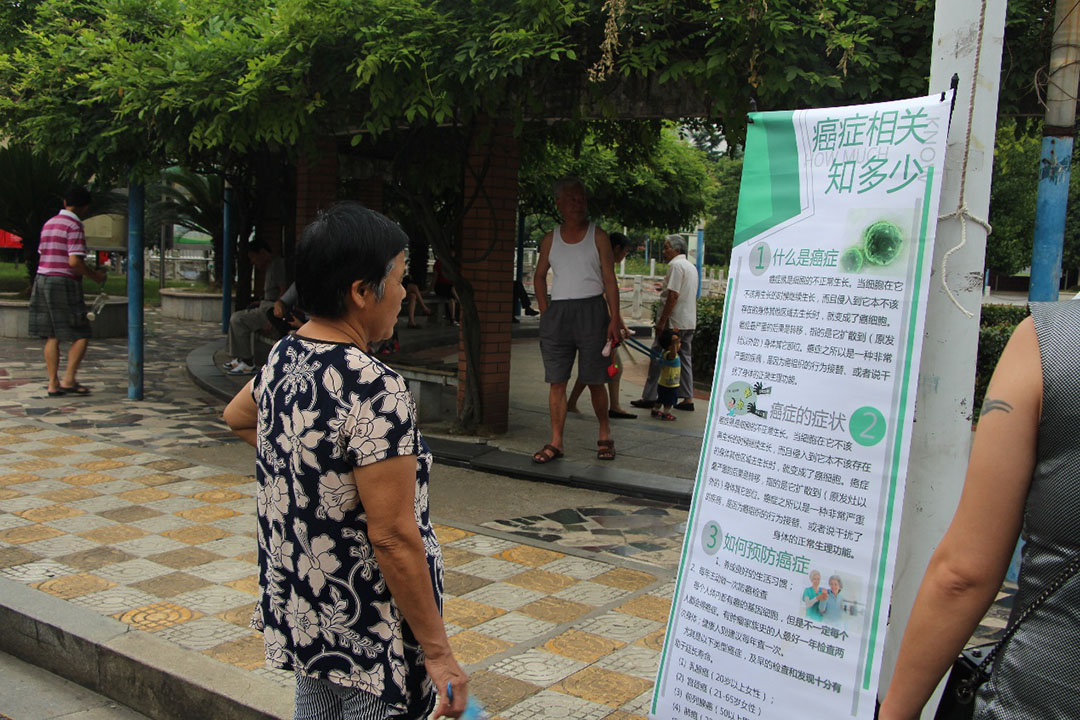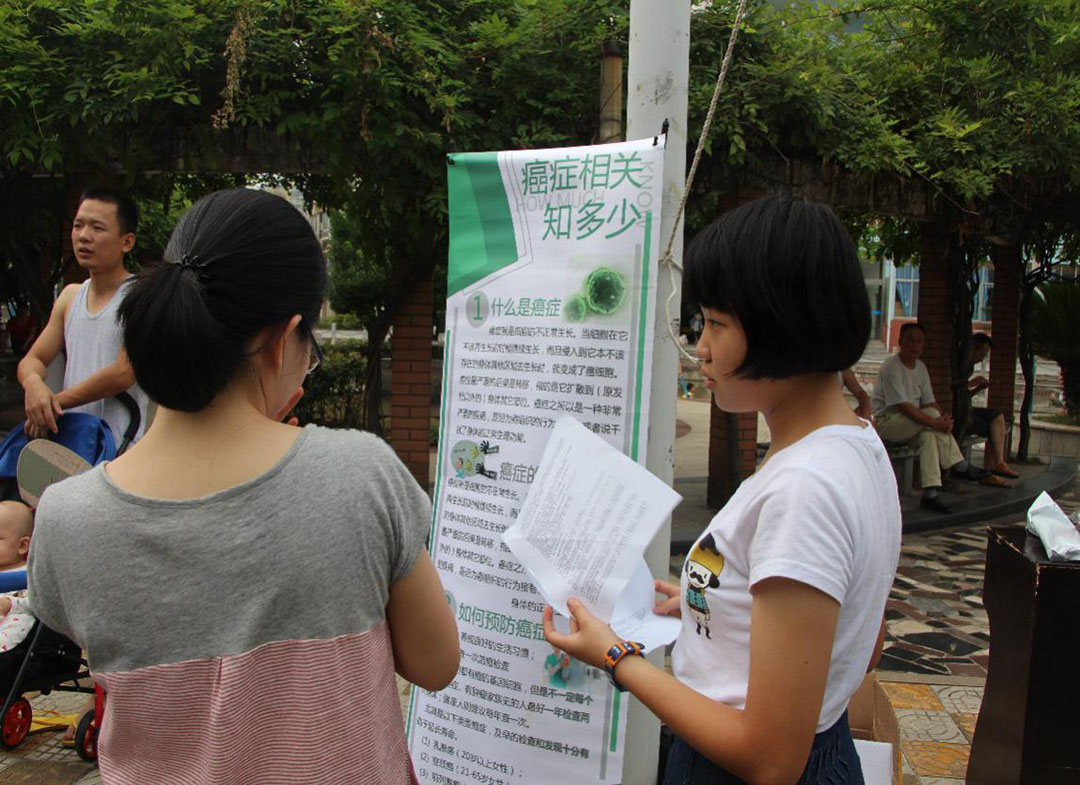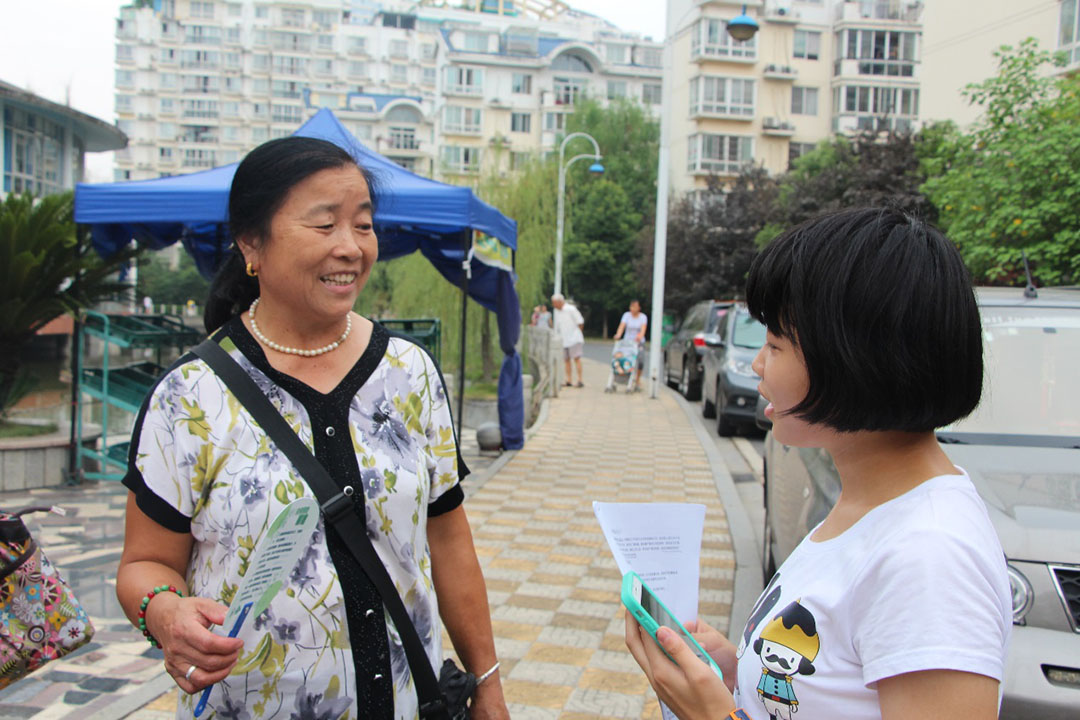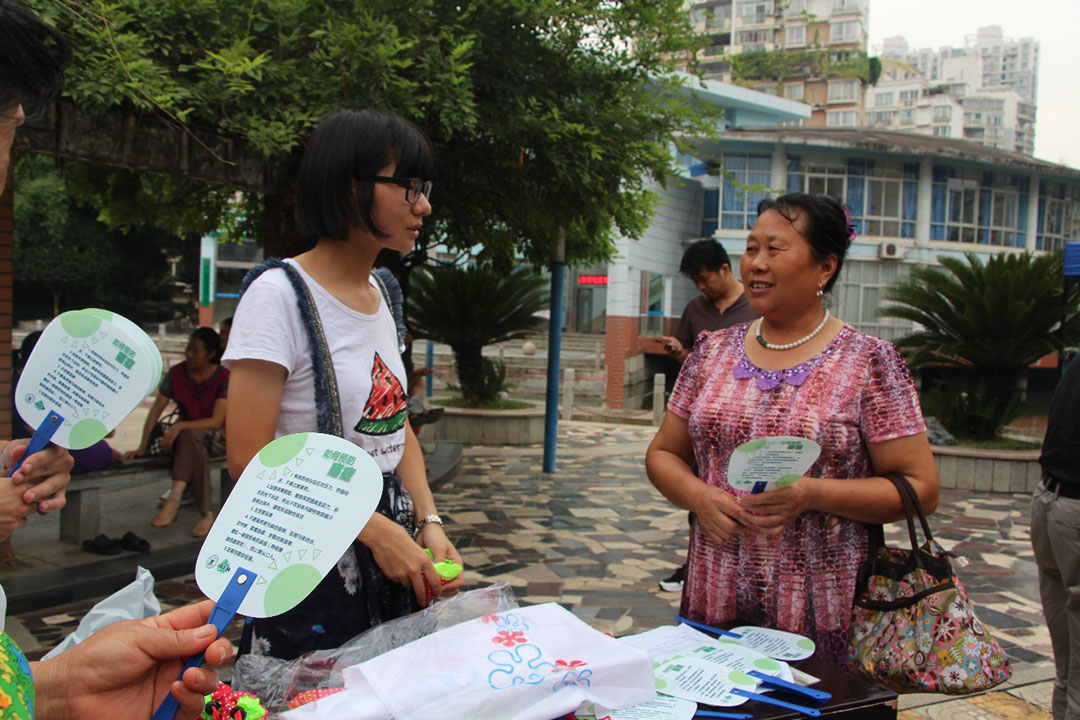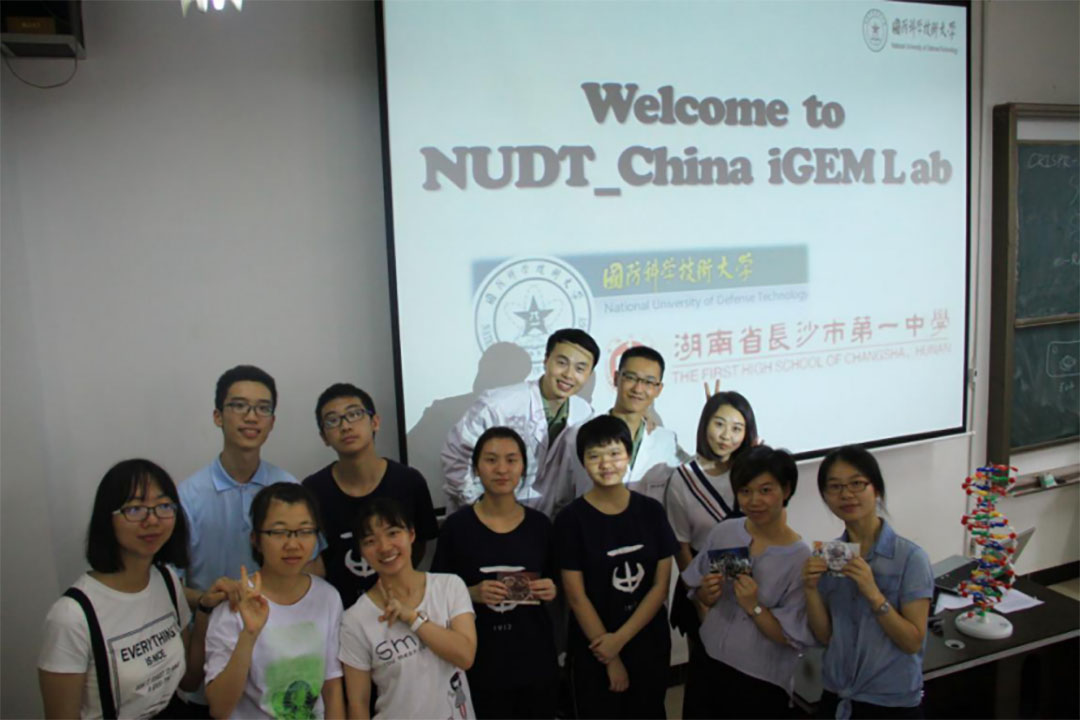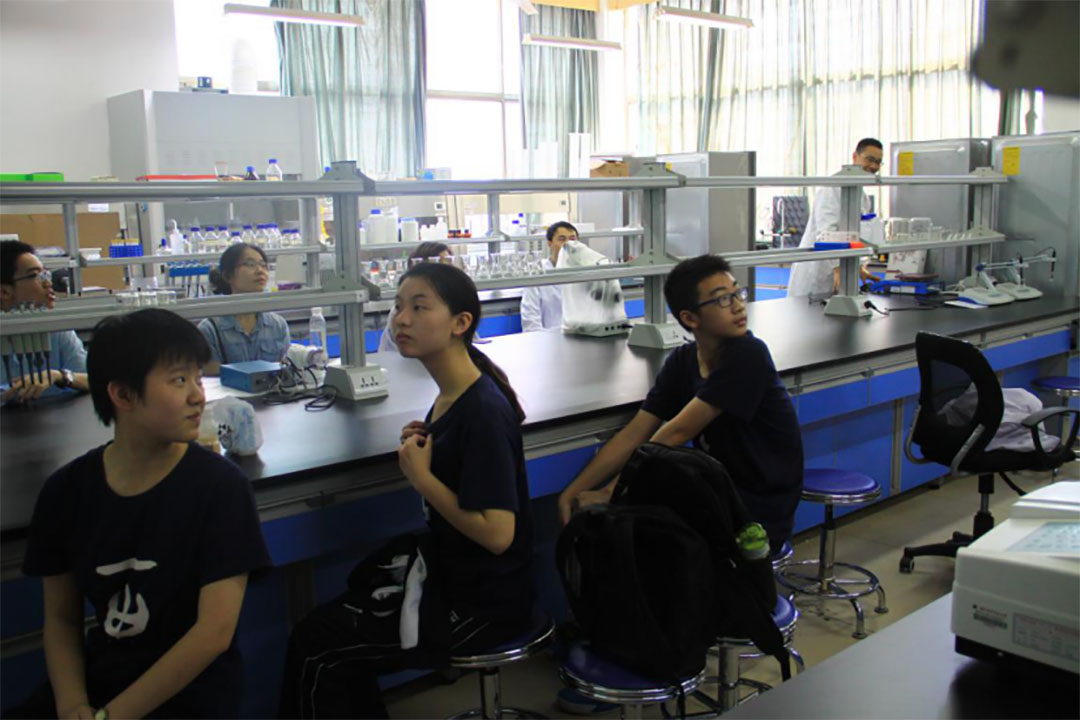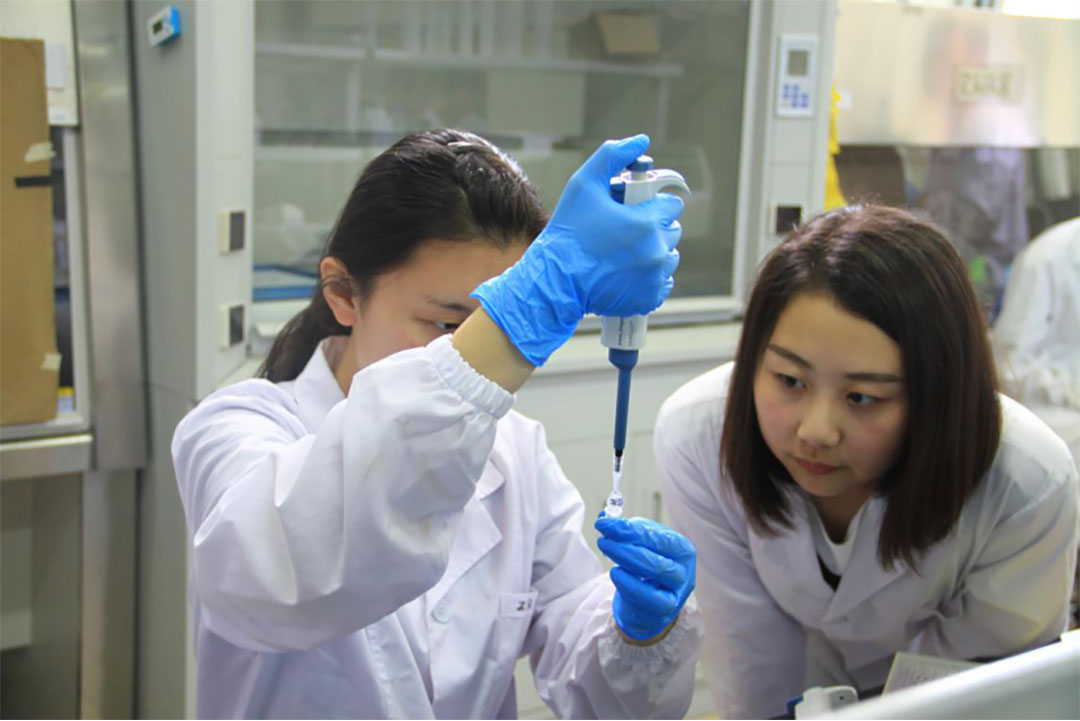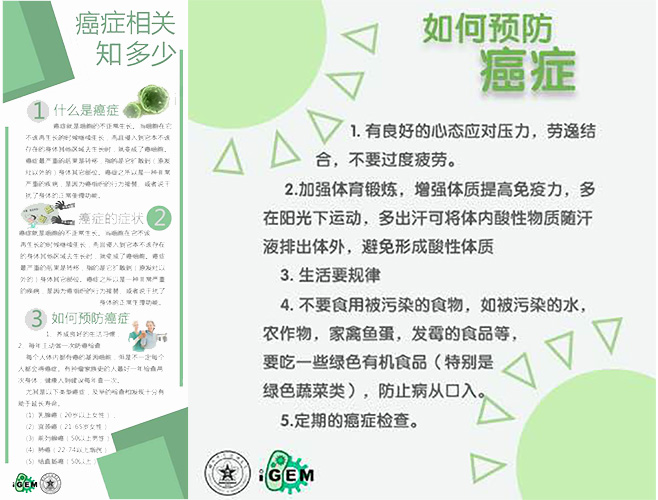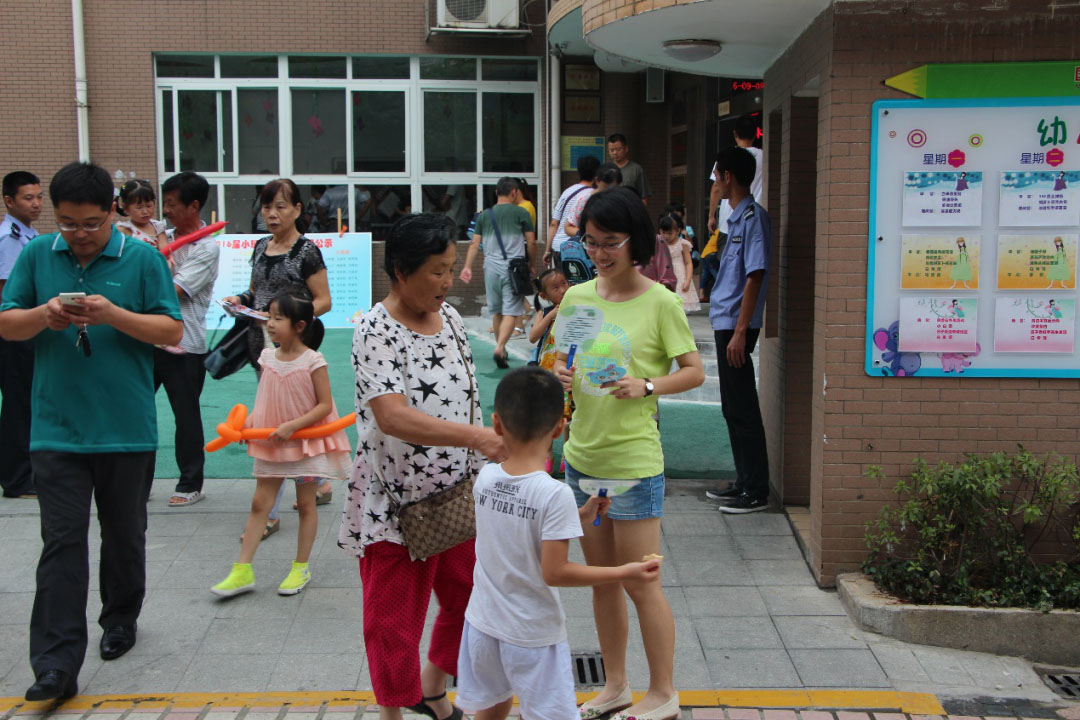HomePage • Human Practices• Engagement
Engagement
With the aim of developing a handy low-cost blood-microRNA detection system as a novel early cancer detection system, we attached our practice work closely to issues around cancer. Through the whole process of Human Practices, we collaborated with doctors, nurses and patients, surveyed netizens, had fun with kids and held lectures with grandpas and grannys. We wanted to do something truly meaningful, to raise people's awareness of cancer and early cancer detection and to sow the seed of early cancer detection in everyone's mind, thus help the world fight against cancer with our slight power.
Collaborations with Doctors, Nurses and Patients
We turned to doctors from First Xiangya Hospital affiliated to CSU, Second Xiangya Hospital affiliated to CSU and Health Center of NUDT as our medical professional consultant in the whole process of the project.
Interviews with Doctors
We had interviews about current situation of cancer with two doctors, which provided us with inspirational ideas.
a. Dr.Li Wenjin, Hematology Department, First Xiangya Affiliated Hospital of CSU
We talked to Dr.Li on issue about procedure of current cancer detection, gaps Between clinical application and basic research, doubted stability of miRNA in blood, efficiency of miRNA detection and expected prospect of miRNA. This helped us have a detailed understanding of current miRNA application in clinical use, from this we started to increase our attention to the testing validness and long-term effections of our project.
b. Dr.Hou Tao, Oncology Department,Second Xiangya Affiliated Hospital of CSU
In interviews with Dr.Hou, we mainly discussed on costs of current early cancer detection methods. During this we found that the costs of current early cancer detection methods were to some extent too high for people especially the poor to afford. And this methods needed big instruments to analysis samples. We also talked about our design. Dr.Hou helped us analyse which reporting system was the best for the product, and we accepted his advice.
Sample Collection for Wet Lab
Since our project this year was to develop a blood-microRNA detection system as a novel method for early cancer detection, and results of previous wet lab all confirmed the effect of our detection system, it was necessary to apply it to serum as a final confirmation. We came to the health exam center of Affiliated Hospital of NUDT and talked with doctors and 5 non-small cell lung cancer(NSCLC) patients about our need for serum samples to and got their support and permission. Also we had 30 healthy postgraduates from NUDT as our volunteer of serum samples. And we collected the blood samples with the help of doctors.
With patients we talked about our project, and obtained there agreement of blood sample for experiments. After signing the Informed Consent Form, we got experimental serum with help of doctors and nurses.
Raising Awareness
In the project this year, the aim of our creation of the product was to detect blood-microRNA thus to promote early cancer detection and then to help the world. However, to realize helping the world, this is far from enough. Thus we scheduled a series of Human Practice works for all ages to expand our project and ideas out of the lab---we raised people’s awareness of cancer&early cancer detection.
We designed varieties of activities for all ages, thus more people could get involved with us.
1. Internet Survey For The Public
In this survey about cancer and early cancer detection, we we chose netizens as our respondent, thus the results would be more objective and random. And we may get more comprehensive and true answers. We designed an Internet survey and put it on social media. Until we stopped the Internet survey, there were 524 netizens who took part in it, among which there were 11 teenagers, 374 middle-ages,and 141 elders. .
The survey mainly involved the three aspects:
(1) How much the public knew about early cancer detection.
(2) What their main problems were when seeking for early cancer detection.
(3) To publize knowledge of cancer,early cancer detection and our project
a. What do you think of our project?
b. What do you think is acceptable of our project?
c. Do you expect to see our product put in to market?
From the surveys we learned that people lack knowledge of details about early cancer detection. Another thing was that they held great expectations towards our project. However, validness of our product were what they doubted most, which was also a common problem of almost all biomarker tests. This reminded us that we must try to raise the validness of the product in our lataral work.
2. Discussion about Ethics
Since the idea this year has a close relationship with cancer early detection, we had a discussion standing in shoes of cancer patients. (click to view details of our discussion)
We held this discussion in the laboratory, and called on several students from different majors(eg. Chemistry, Medicine, Electronic Engineering) to take part. Everyone had prepared some documents as their references of discussion, and the talk was lively because of our fierce discussion. As we talked gradually deeper, our moods became increasingly low. Cancer has been a monster for so many years, but the ethical issues of treatment, finance, lie or tell and social assistance have never had an answer.
This year what we want to spread is not only a novel early cancer detection system, but also awareness of people with cancer. We are all weak in the face of diseases, especially deadly ones like cancer. Only if we pay attention to our health and stay alert for accidental diseases can we live a healthy life for long.
3.Grandpas and Grannys’ Mini Lecture
We planned mini lectures of knowledge of cancer and early cancer detection in several districts mainly for the elder to increase their attention to early cancer detection. Also we wanted to spread the idea that early cancer was not terrifying and could be cured or prevented. Finally , we publicized knowledge about synthetic biology, iGEM, and our project this year.
4. Lab day for high school students
We invited several high school students who were enthusiastic about biology and their teachers from Changsha No.1 High School to our laboratory. As for the activities, firstly we made a presentation about synthetic biology, iGEM and our project. Then we showed these guests around our lab and introduced our instruments and experiments, and guided them to carry out some interesting biology experiments including polymerase digest and electrophoresis.
5. Fun Game with Our Topic
Adventure of iGEM is a third person adventure game that aims at introducing iGEM and our project this year to everyone in an interesting way. We spread this game among our classmates and their siblings, and they all said it was awesome. We are thinking of putting this game on popular game sites to spread our ideas further, to more people.
6.Long-term sustainability
To help our project leave a deep impression on people, also to expand the range of our publicity, we made useful little things with knowledge of cancer/early cancer detection/iGEM for families as souveniors.
Distributing mini fans with our poster to everyone.(Chinese topic of the posters: How to Prevent Cancer)

